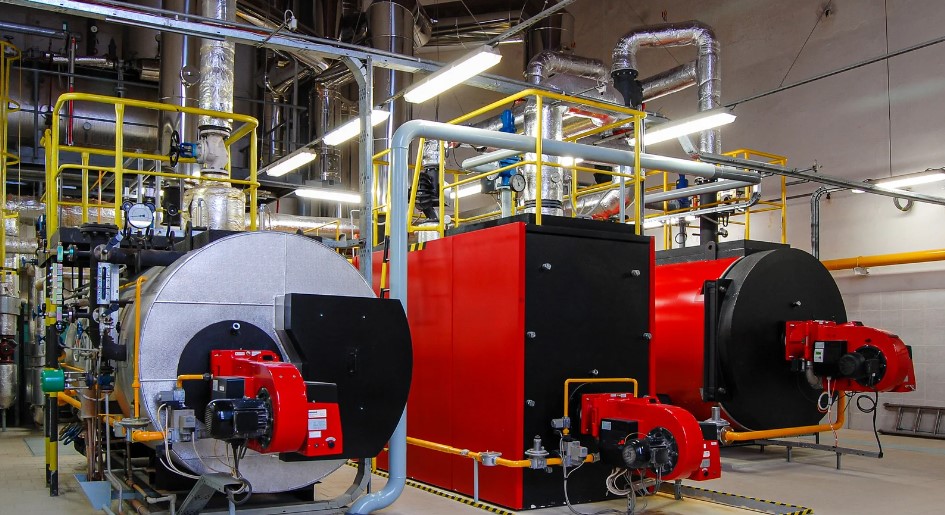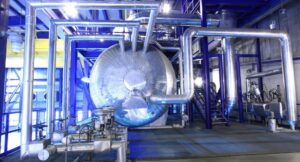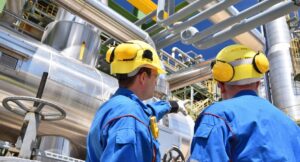
Innovations in Steam System Management – The Rise of Smart Monitoring
Steam system management is essential across numerous industries, from manufacturing to energy production. When operated efficiently, steam systems allow for maximum productivity, reduced energy consumption, and cost savings. Technology has recently made a significant impact in this area, as smart monitoring has revolutionized steam system management, offering real-time insight and predictive capabilities.
This blog will explore the definition and importance of steam system management, as well as the advanced approach known as smart monitoring.
Definition of Steam System Management
Steam system management involves the operation, maintenance, and optimization of steam systems within industrial facilities. The process includes monitoring steam generation, distribution, and usage, as well as identifying and correcting system inefficiencies, or problems.

Both the real-time data analysis and sensor components are used to monitor steam systems and facilitate smart system monitoring. Such innovation in efficient steam system management is crucial for several evident reasons. Steam systems typically represent a considerable percentage of energy usage throughout most industries, thus inefficiency can result in a particularly large amount of energy wasted and in turn create a huge financial drain.
In addition to this, poorly or improperly managed steam systems can allow steam leaks to occur. This can in turn lead to poor quality product, increased downtime and dictates a much higher potential for safety issues. The third piece is perhaps difficult to define, but could clearly become a reality: Optimal steam system management ensures the system stays running as much as your process needs to crank out the product you need.
Innovation in smart monitoring calls upon the use of advanced technology, such as sensors and data analysis and automation which is used to collect and assess data on the various real-time behaviors of the steam system. Once these new potential problems are found there is a data-driven decision within a pro-active smart monitoring environment.
Traditional Steam System Management
For years, steam system management was reliant on manual monitoring and reactive maintenance. Periodically, engineers would manually check pressure gauges and temperature readings, and physically inspect steam traps. While helpful, manual monitoring has significant limitations.
It merely represents a snapshot of the system at a specific point in time, making it difficult to identify inefficiencies or pending issues. Furthermore, manual inspections are labor and resource intensive, often leading to slow response times, unnecessary downtime, and missed opportunities to make meaningful operational improvements.
What is Smart Monitoring?
Smart monitoring involves the use of digital technologies to gather, analyze, and interpret real-time data from steam systems. It requires the integration of various components – including sensors, connectivity devices, cloud platforms, and data analytics software – to enable the continuous monitoring and analysis of this data.
Smart monitoring offers several key benefits in steam system management. It provides real-time visibility into steam usage, allowing operators to identify inefficiencies and optimize performance in a timely manner. It also allows early detection and resolution of steam leaks, which, if left unchecked, can result in energy waste and represent a safety hazard.
Smart monitoring allows predictive maintenance, avoiding potential system downtime by taking proactive maintenance actions. It also identifies opportunities for improving energy efficiency, which can result in substantial cost savings and reduce the system’s environmental footprint.
Smart monitoring systems are composed of a number of different components that work together to gather, transmit, and analyze data. These components include:
- Sensors: These devices measure steam pressure, temperature, flow rate, steam trap operation, or other relevant factors, and collect this data.
- Connectivity devices: These devices transfer the data collected by the sensors to cloud platforms or data analytics software using wired or wireless connections. They may use a variety of communications protocols based on the application and provided by different suppliers or communication protocol standards integrated on a single platform, based on commercial availability and what is most economically beneficial for a particular application.
- Cloud platforms: These platforms store and process the data collected from the sensors. Multiple communication protocols may be used to interface with the cloud platform because the sensors being monitored and the communication protocols they use may vary. The cloud platform functions as a central location where data can be analyzed and visualized by others.
- Data analytics software: This software receives the data from the cloud platform and the data that had previously been collected. It then runs analytic programs that look for patterns in the data and compare current and previous operational data to the historical norm, identifying potential problems that could need attention or actions that could be taken to optimize the system.
Application of Smart Monitoring in Steam System Management

Smart monitoring technology can be applied across the steam system in many valuable ways. A few of the most critical include:
Real-time Monitoring of Steam Usage
Smart monitoring enables 24/7 monitoring and visibility into steam usage. By using data collected from sensors, operators can see when steam is being underutilized and overutilized, and make optimized decisions based on that information.
Detecting and Resolving Steam Leaks
Steam leaks lead to significant energy loss and system inefficiency. With smart monitoring, it’s easy to check for abnormal patterns, and instantly discover drops in pressure that signify steam leaks. In this way, maintenance teams can pinpoint and correct steam leaks as they occur.
Predictive Maintenance and System Optimization
Smart monitoring systems can study historical and real time data to predict the need for maintenance or repair. By studying data, the system can predict when system failure is likely to occur and prompt proactive maintenance action. This allows maintenance to schedule timely maintenance when it’s less likely to interfere with system usage, while avoiding damage and costly downtime.
Energy Efficiency Improvements
Smart monitoring technology delivers insight into energy consumption patterns and inefficiencies within steam systems. Operators can then optimize areas of energy use, leading to a significantly reduced energy cost, reduced environmental impact, and a more efficient total system.
Importance of Steam Trap Monitoring Software
Steam traps facilitate the efficient removal of condensate, while preventing steam losses, making them a vital aspect of stream system management. Smart steam trap monitoring systems like Pulse Industrial can incorporate dedicated software. This software analyzes trap performance and identifies malfunctioning traps, allowing operators to proactively identify and correct faulty steam traps, reducing energy waste and maintaining optimal system performance.
Benefits and Outcomes Achieved through Smart Monitoring
Many have seen positive outcomes from the application of smart monitoring in the management and operation of steam systems across a wide range industries, including:
- Cost savings through increased energy efficiency and reduced downtime
- Improved system reliability and performance
- Enhanced product quality and consistency
- Reduction of the potential safety hazards and risks associated with steam leaks
- Increased sustainability by minimizing energy waste and environmental impact
Challenges and Considerations

The upside to implementing smart monitoring technology in the management and operation of steam systems is considerable, but there are a few challenges and considerations to bear in mind:
Potential Drawbacks or Obstacles to Implementing Smart Monitoring
Companies may need to make modifications to infrastructure and control systems to successfully incorporate smart monitoring systems into existing steam systems. In addition to these modifications, companies may face challenges related to sensor placement, as well as system and equipment connectivity and compatibility.
Cost Considerations and Return on Investment
The implementation of smart monitoring systems comes with upfront costs, which often include purchasing and installing sensors, connectivity devices, and data analytics software. The cost savings and efficiency gains delivered through smart monitoring systems can offer a significant return on investment over the long term.
Data Security and System Integration
Issues As with any data-driven technology, data security and privacy are critical factors that must be addressed to protect sensitive data collected through smart monitoring systems. Integrating smart monitoring into existing control systems and industrial infrastructure can require careful planning and thoughtful approaches to systems integration.
Future Trends and Innovations
The outlook for smart monitoring in steam system management is very bright, with some tantalizing trends and innovations on the horizon, including:
Advances in Smart Monitoring Technology
Ongoing advances in sensor technology, connectivity, and data analytics algorithms will continue to improve the accuracy, reliability, and functionality of smart monitoring systems, offering even more precise monitoring, more effective anomaly detection, and finer optimization strategies.
Integration of AI and Machine Learning for Better Steam System Management
By leveraging artificial intelligence (AI) and machine learning (ML) algorithms, smart monitoring systems can evolve from reactive monitoring to proactive optimization. Rather than simply relaying data, steam system management tech now can analyze massive amounts of data, identify complex patterns, and make real-time recommendations for system improvements.
Industry Trends and Future Predictions
Smart monitoring technology is expected to become more commonplace as companies turn their attention to sustainability, energy efficiency and cost savings with the bottom line. Ultimately, we could see smart monitoring integrated into overall facility management systems for seamless exchange of data and optimization across multiple operational processes.
Conclusion
Effective steam system management is critical to operational excellence, cost savings, and sustainability goals within industry. The advent of smart monitoring technology has radically transformed the management of engineering systems such as steam. Its real-time insights, predictive maintenance capability, and additional aspects for energy efficiency improvement have continuously pushed its capabilities to revolutionize businesses and industry.
Architects and engineers are recommended to lead their maritime to steam system management systems that are looking to enhance their management practices. Businesses are encouraged to quickly adapt this technology and revolutionize their engineering system management practices.
Author Profile

- Blogger by Passion | Contributor to many Business and Marketing Blogs in the United Kingdom | Fascinated with SEO and digital marketing and latest tech innovations |
Latest entries
 Digital MarketingApril 11, 2025Digital Marketing Tactics That Generated £1M in Revenue for UK Retailers
Digital MarketingApril 11, 2025Digital Marketing Tactics That Generated £1M in Revenue for UK Retailers Web DesignApril 11, 2025UK Digital Trends: Top Website Building Solutions for 2025
Web DesignApril 11, 2025UK Digital Trends: Top Website Building Solutions for 2025 TechnologyMarch 31, 2025The Future of Text-to-Speech: Transforming Communication in Healthcare
TechnologyMarch 31, 2025The Future of Text-to-Speech: Transforming Communication in Healthcare TechnologyMarch 28, 2025Top-Rated Tools Every Modern Recruiter Needs in Their Toolkit
TechnologyMarch 28, 2025Top-Rated Tools Every Modern Recruiter Needs in Their Toolkit

